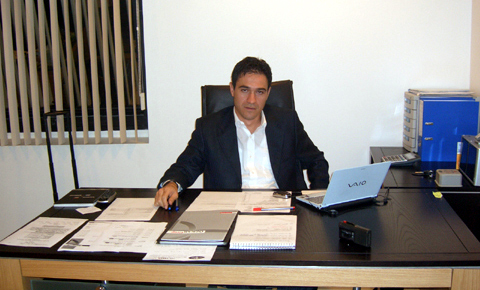Today, he has a backpack full of them. To supplement his old-school hearing aid, he favors a $350 iPhone-linked earpiece made by Sound World Solutions, a hearing-hardware maker in Park Ridge, Ill., for whom he’s begun to consult. With the Sound World device on, he can amplify phone calls and streaming music as well as his surroundings. A third, $500 earpiece was custom-made by Ultimate Ears in Irvine, Calif., to help him detect a wider range of musical tones while composing. For restaurants and theaters, he has a $45 directional microphone that pairs with a $5 app to isolate desired voices. And for especially cacophonous places, he has spare $700 microphones, made by Etymotic Research in Elk Grove Village, Ill., that he can strap to companions.
Einhorn credits the audio patchwork with saving his career and his life. “It’s incredible,†he says over lunch in a busy restaurant, as he toggles the proper setting on his phone.
The Bluetooth-connected earpieces aren’t classified as hearing aids by the U.S. Food and Drug Administration. They’re called personal sound amplification products, or PSAPs. Basic versions of such devices have existed for more than a decade in lonely RadioShack aisles and a handful of other places. But in the past 18 months, advances in circuitry and low-energy Bluetooth transmission have helped developers radically improve the designs to make high-quality, long-lasting alternativesto hearing aids while keeping pricesat a fraction of the industry standard.
Whatever regulators or insurers call them, PSAP manufacturers are angling to expand the $6 billion global market for hearing technology. Largely due to the cost, 75 percent of the 34 million Americans with hearing loss don’t use aids, says David Kirkwood, the editor of industry blog Hearing Health & Technology Matters. “A lot of people will continue to pay for traditional hearing aids,†he says. “But there are now inexpensive, easy-to-get alternatives.â€

Part of the reason PSAPs are cheap is that they’re unregulated. Hearing-aid fittings and audiological calibrations account for much of the cost of aids from the big six makersâ€"Siemens, Sonova, Starkey Hearing Technologies, William Demant, GN ReSound, and Widex. A midlevel pair that retails for $4,400 costs about $440 to manufacture, according to AARP. Research and development spending is also a factor: Unlike the free Bluetooth standard used by upstarts such as Sound World, old-school hearing aids run on proprietary signal processing and transmission technology. Siemens, Sonova, and Widex declined to comment; GN ReSound, Starkey, and William Demant didn’t respond to requests for comment.
Still, being kept out of doctors’ offices has been a huge problem for PSAP makers, says Venkat Rajan, who tracks medical devices for researcher Frost & Sullivan. While the size of the market can be difficult to gauge given the lack of regulation, anecdotal evidence suggests sales have been soft, he says. It doesn’t help that, according to industry journal the Hearing Review, the average American buying a hearing aid is 71 years old. “Trying to find that customer base has been difficult,†Rajan says.
The marketing of hearing aids, classified as medical devices by the FDA since 1977, is strictly regulated in the U.S. According to agency guidelines that predate the latest generation of equipment, PSAP makers aren’t allowed to market their products as medical devices. Instead, they’re supposed to be used recreationally by people who can already hear comfortably. The FDA, which wouldn’t say whether it plans to change its rules, occasionally issues warnings to companies it believes to be violating them, so PSAP ads tend to include at least one verbal somersault. An ad for Etymotic describes its latest product, the Bean, thusly: “Not a hearing aid but has many advantages.â€
The $300 Bean is the brainchild of Mead Killion, the co-founder of Etymotic. He invented the analog hi-fi amplification technology behind the device back in 1988, but says it’s only since 2013 that circuitry has become cheap enough for the product to be worth manufacturing en masse. His company uses the same technology in adaptive earplugs designed for orchestra musicians or infantry troops to keep music or conversation audible while dampening loud noises. A decade ago, Killion failed to persuade the FDA that early PSAPs should be sold over the counter. He’s lobbying for a contract with the Department of Defense.
Normally, I hear fine, but I conducted a hands-on experiment shortly before an interview with Killion. It became clear that having professional help putting these things in is a good idea. Initially, one Bean in each ear made it easy to hear faraway gossip in a noisy Whole Foods. Then I pushed them too far, and suddenly could hear nothing at all. Killion said the problem was waxy buildup in my narrow ear canals, so the next step was a $150 cerumenectomyâ€"that is, getting a doctor to scrape out gobs of wax and clear the blockage.
The era of Internet diagnosis hasn’t eliminated the need for medical professionals, says Erin Miller, president of the American Academy of Audiology. “This is our biggest problem with the PSAPs in general,†she says. “We want to make sure someone has looked in the patient’s ear.†All the more reason, PSAP makers argue, to put their products in medical offices next to those from Starkey and ReSound. For now, the companies’ sales will be limited to true believers like Einhorn, the composer. “You have to remember that I’m a maniac,†he says. “I will do anything to hear as best as possible in any situation.â€
What we say: Whilst Bluetooth is regarded as an old technology now the reliability can't be questioned. It would seem that this type of technology is a log time coming to a thirsty industry for inventive technology. Source - http://www.bloomberg.com/news/articles/2015-03-05/hearing-aid-alternatives-get-cheaper-more-powerfulÂ





